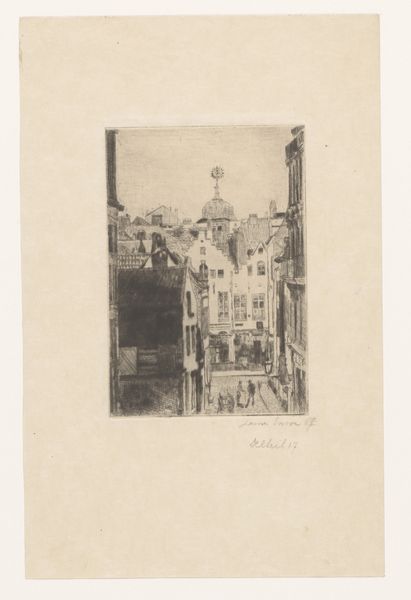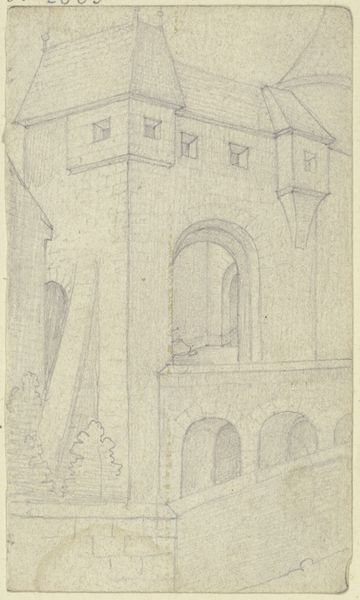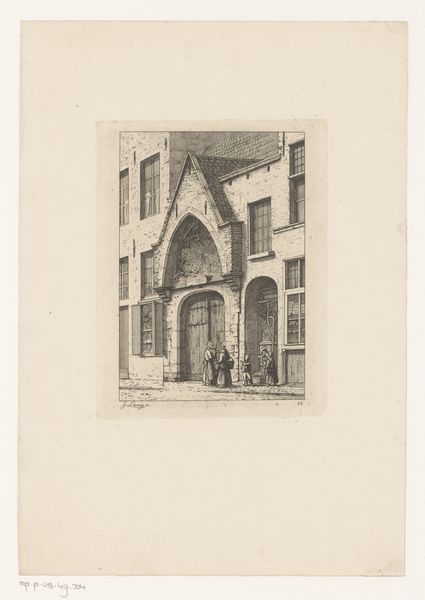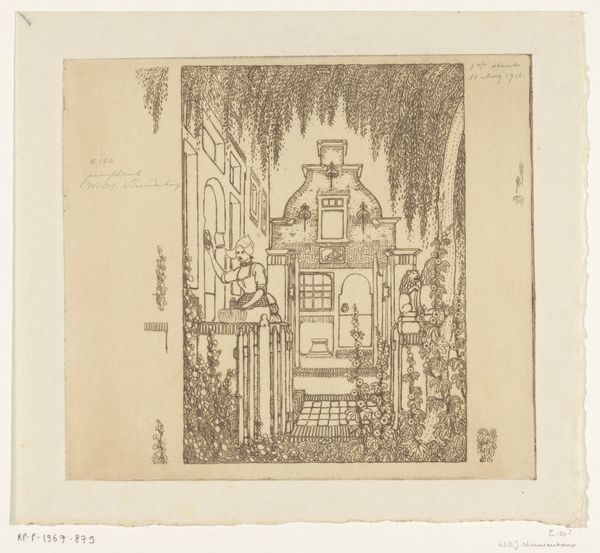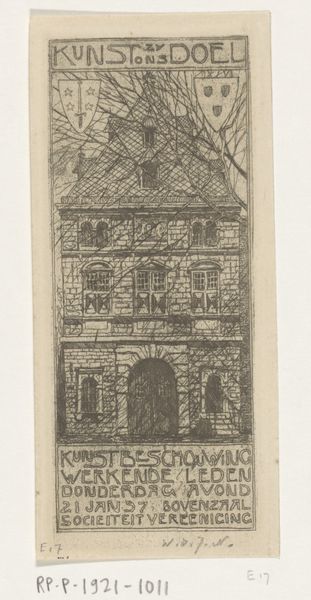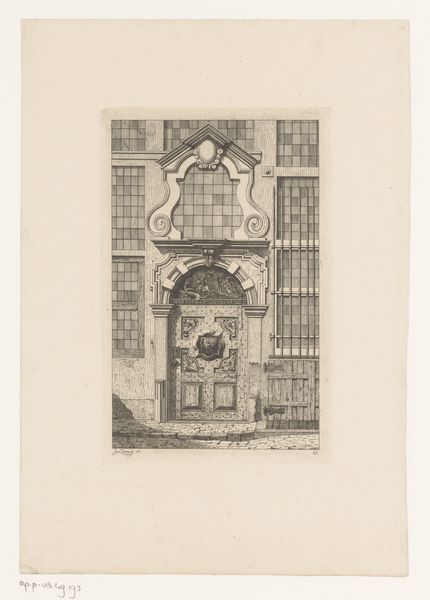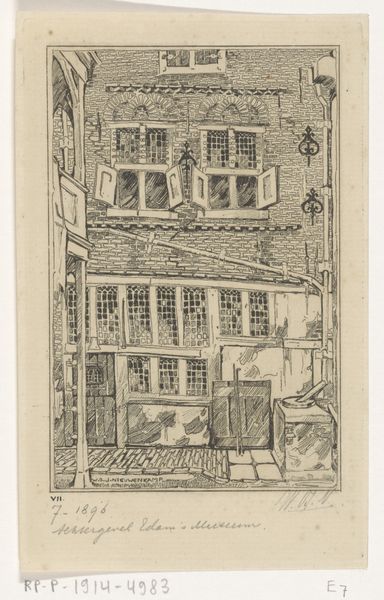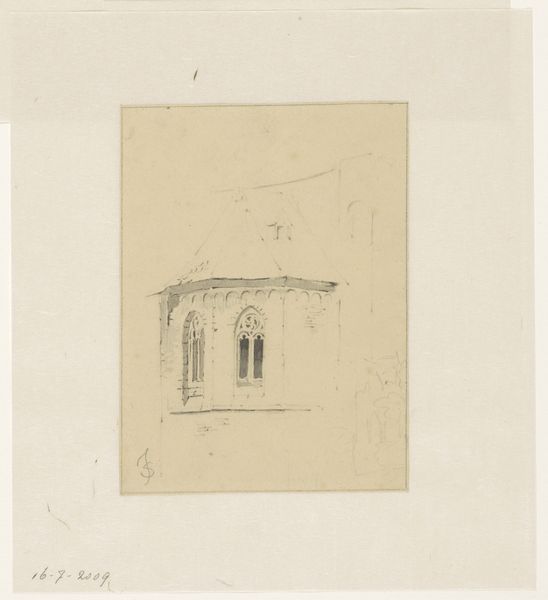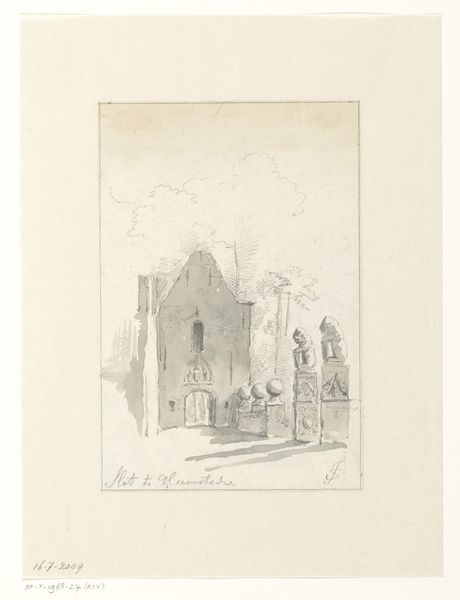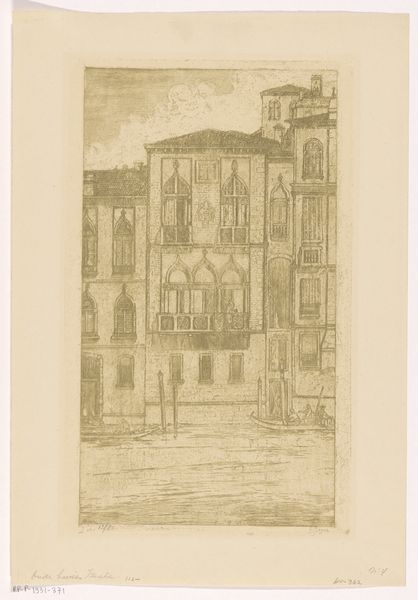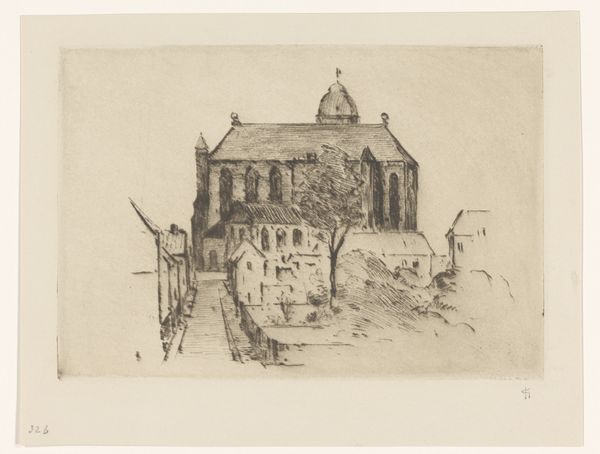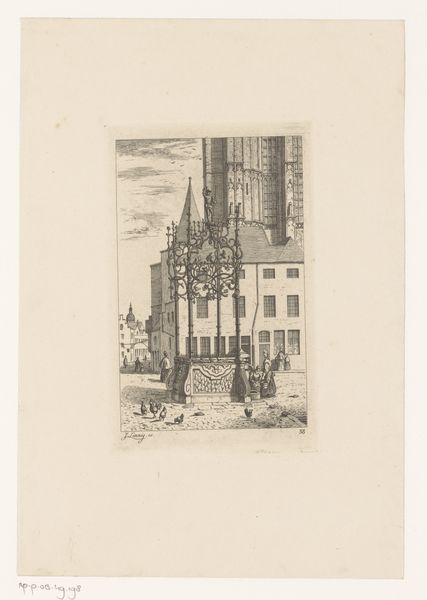
Huizen tegen de Sint-Bavokerk aan de Oude Groenmarkt in Haarlem 1900 - 1907
0:00
0:00
print, etching
#
art-nouveau
# print
#
etching
#
landscape
#
etching
#
cityscape
Dimensions: height 196 mm, width 148 mm
Copyright: Rijks Museum: Open Domain
Curator: Let’s explore this etching by Wijnand Otto Jan Nieuwenkamp titled "Huizen tegen de Sint-Bavokerk aan de Oude Groenmarkt in Haarlem," dating from approximately 1900-1907. It’s a lovely cityscape rendered with exquisite detail. Editor: My first thought is how warm and nostalgic this print feels. It’s monochromatic, but the sepia tone gives the scene a comforting, almost dreamlike quality, like a faded photograph from a beloved family album. Curator: Absolutely, Nieuwenkamp's etching is rich in the symbolism of place. We see houses pressed against the Sint-Bavo Church; architecture embodies collective memory and the passage of time. Note how the solidity of the church—a symbol of enduring faith and community—contrasts with the more transient, domestic spaces. Editor: And the composition reinforces this idea. The artist places us, the viewers, right at street level, creating a sense of intimacy. There is an implied narrative here, though the people remain anonymous. It almost implies how community happens between individuals, but also inside this enduring construct we call faith, religion, or power. Who is at the heart of the power here? The person we see in front? Curator: The symbolism extends to Nieuwenkamp's choice of etching. The delicate lines lend an air of meticulousness, perhaps signifying a longing for a past rooted in careful craftsmanship and tradition. Consider, too, how etching itself mimics the architectural process, layering line upon line to construct an image, similar to how bricks build a structure. It's as if he were imbuing a new layer of history through this conscious selection of the printing method. Editor: It's tempting to romanticize the scene, seeing only idyllic charm, but it’s crucial to ask: Whose stories are being centered, and whose are absent? In such depictions of architecture and everyday life, it is easy to lose ourselves in the pleasant atmosphere. While appreciating this piece, we must remain critically attuned to issues of access, power, and representation embedded within this visual landscape. Curator: A pertinent point; seeing those power relationships invites crucial contextual thinking when considering an early-twentieth-century artwork portraying a long-standing social hierarchy that certainly existed within that space. The perspective shift certainly affects its ongoing visual potency. Editor: Ultimately, this etching reminds me of the power of place, both as a site of personal history and a repository of cultural memory, urging us to reflect on whose histories are preserved and whose voices still need amplification within those narratives. Curator: I agree. Thank you.
Comments
No comments
Be the first to comment and join the conversation on the ultimate creative platform.

